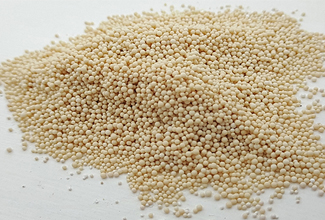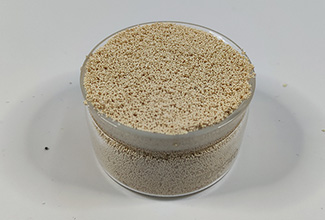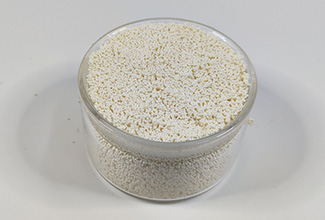Boron absorbing resin is a macromolecular polymer with a coordinating amine(N-Methyl glucamine) group on the styrene-divinylbenzene skeleton. The coordinating amine group can form a very stable complex with boric acid, and is inert to other anions, which helps to form a stable complex with borate ions in water, so as to achieve the removal of borate in aqueous solution. This group is sensitive to pH value, the formation of complex ions can only be generated in neutral and alkaline solutions, and the complex ions are decomposed in acidic solutions.
Mainly used for boron removal of industrial products and boron removal from different aqueous solutions.
Main uses:
1) Prepare boron-free magnesium salt solution. 12% magnesium chloride generally contains about 100ppm of boron, and the amount of boron is reduced to less than 10ppm by resin treatment to produce excellent magnesium.
2) Purification of lithium salt solutions such as lithium hydroxide and lithium bicarbonate;
3) Removal of boron in boron-containing aqueous solutions such as drinking water and irrigation water.
4) Seawater desalination and deboronization.
5) Adjustment of boron content in nuclear reactors.
| S/N | Item | DB500 |
| 1 | Appearance | Creamy to beige opaque beads |
| 2 | Ionic form: | Free base |
| 3 | Mass complete exchange capacity(mmol/g) | ≥2.0 |
| 4 | Volume complete exchange capacity(mmol/ml) | ≥0.80 |
| 5 | Moisture content (%) | 43~53 |
| 6 | Bulk density(g/cm3) | 0.73~0.81 |
| 7 | Real density(g/cm3) | 1.03~1.10 |
| 8 | Bead size (mm) | 0.315~1.25 |
| 9 | Uniformity coefficient | ≤1.60 |
| 10 | Sphericity after attrition (%) | ≥95% |
| 11 | Boron saturation adsorption capacity g/L (calculated as boric acid) | ≥15 |
| 12 | Stability, temperature: | ≤80℃ |
| 13 | Operating flow rate m/h | 5~30 |
| 14 | Regeneration | The regeneration process varies according to the application |
| 15 | Applicable pH range | 5~14 |



